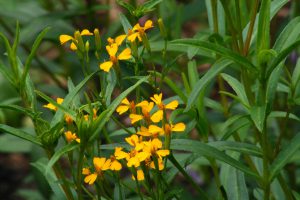Simple steps to grow tarragon

The world of garden herbs is so fascinating that it is just mind-blowing. Garden herbs have been around and enjoyed by many generations for hundreds of years. The flavors and natural healing these herbs bring is so amazing.
Herbs can be used from flavoring foods, for enhancing one’s health, even use as repellents to keep insects at bay. Can you imagine a world without herbs? I know I can’t, In this article, we will be discussing how to grow tarragon that can really spice up your foods giving it that BANG. The leaves of tarragon have such a pleasant aroma and the taste is somewhat peppery.
Tarragon is used to flavor many dishes including rice, baked meats, sauces steam foods, broil foods, soups, salads, etc.. having this herb as a part of your seasoning will give your foods that added flavor that will go a long way in really enhancing the taste of your foods.
How to grow tarragon
Simple steps to grow tarragon
Tarragon can be grown from division, cuttings, or seedlings. When growing tarragon you should consider
1. Location-Plant herb in a location that gets full- moderate sunlight.
2. The Soil should be a rich loamy soil that is well-drained and retains the right amount of water.
3. Preferred soil ph range is 6.5.
4. Allow the soil to dry out somewhat before giving it a good soaking.
5. Tarragon should be planted 18-26 inches apart.
6. Tarragon can grow anywhere from 2-4 feet.
7. Fertilize tarragon with miracle-grow or a slow-release organic fertilizer.
Pests problem of tarragon
Diseases of tarragon
Tarragon is susceptible to
1. Powdery mildew- appears late in the growing season. This disease starts on the younger leaves as blisters and then causes leaves to curl. leaves that are infected are covered with a gray to white powder growth.
As the disease progress, the leaves turn brown and drop which is known as leaf defoliation. Plant resistant cultivars, prune disease foliage ( leaves) from the plant, and ensure that fallen debris is cleaned up from around the plant, The best time to water plants is in the morning, this gives plants time to dry which will discourage disease.
Mulching your plant with a thick layer of much will act as a barrier to prevent disease spores from making contact with the plant leaves. All plant debris should be disposed of after harvesting. Also when pruning sterilizes the pruner between cuttings to discourage disease from spreading. Apply copper-based fungicides or sulfur to control. Follow the label when applying these chemicals because the label is the law. Neem oil is also recommended to help with control.
2. Downy mildew- appears as white to yellow patches on the upper surface of the older leaves. The undersides of the leaves are covered with gray to white cotton-like fungi. As disease sets in the leaves turn brown then fall off.
Cool, moist conditions encourage this disease. Fungal spores are carried by garden tools, rain, insects, and wind. Water plants early in the morning to discourage disease, Plant resistance varieties, destroy and remove all infected plants, Ensure that plants have sufficient spacing for proper air circulation also using a copper spray will provide protection against disease. When using copper sprays follow the label because the label is the law.
3. Rhizoctonia- is a fungus that lives in the soil, Rhizoctonia cause damping-off, stem rots, blight of leaves, and root rots. This fungus causes brown-reddish lesions to form at the soil base, decay sets in quickly as the disease persists, the lesions will enlarge followed by dark sunken cankers also leaves touching the soil can be infected.
Applying fungicides have proven to be effective also proper pasteurization eliminates Rhizoctonia from the potting soil.
Harvesting tarragon
Harvest tarragon once the plant is full or has lots of leaves. Never take or remove all of the leaves, allow 1\3 to remain. Using scissors or kitchen shears is a great tool to harvest tarragon leaves.
Tarragon Fun facts
Here are some fun facts about tarragon
1. Tarragon is a perennial herb that can survive up to two years or more in the wild.
2. Tarragon has been dated back as far as 500 BC and was cultivated by the ancient Greeks.
3. Tarragon belongs to the daisy family.
4. Tarragon blooms during the summer months
5. Tarragon blends well with other spices.
6. Tarragon was used in the medical field to treat illnesses such as insomnia and scurvy.
7. The leaves of tarragon are rich in Vitamin A and C
The final word
Tarragon is an amazing herb that has such strong flavors that will really spice up your foods giving it that WOW. Growing these herbs is not hard at all just follow these simple steps and you
will be on your way to harvesting tarragon fresh from your home garden. So go for it and spice up those dishes that will have family and friends coming back for more. Tarragon herbs, taking your foods to the next level.
About the author
Norman loves being in the garden, both at home and for his job....
he is 'Natures Little helper' being outdoors, growing his vegetables and flowers from an early age.
Now having spent over 22 years in the profession he want to give some of his knowledge to others...
his vast array of hints and tips you will find scattered over this site will help you no end growing plants in your garden.
